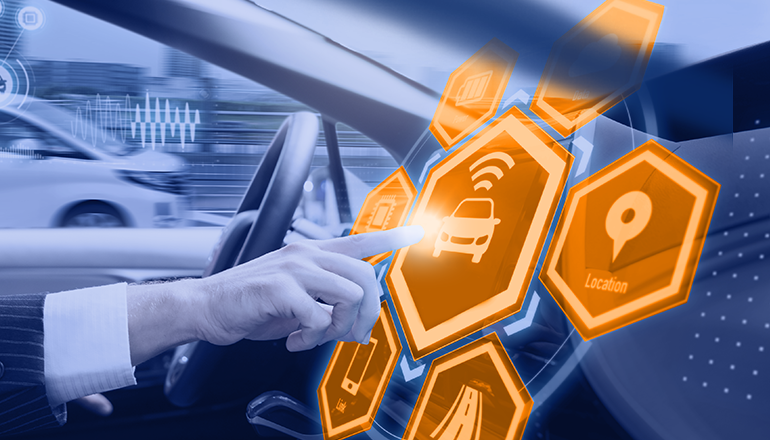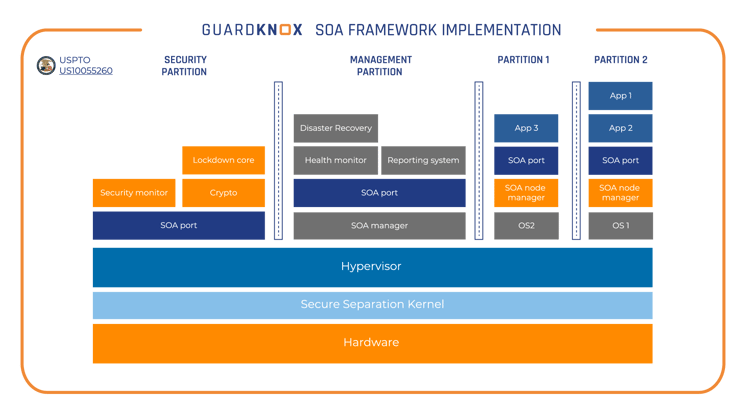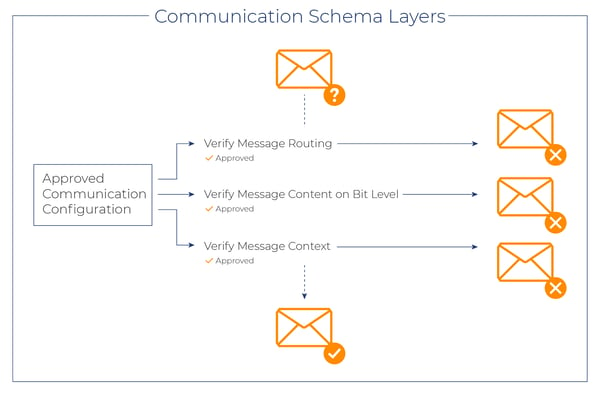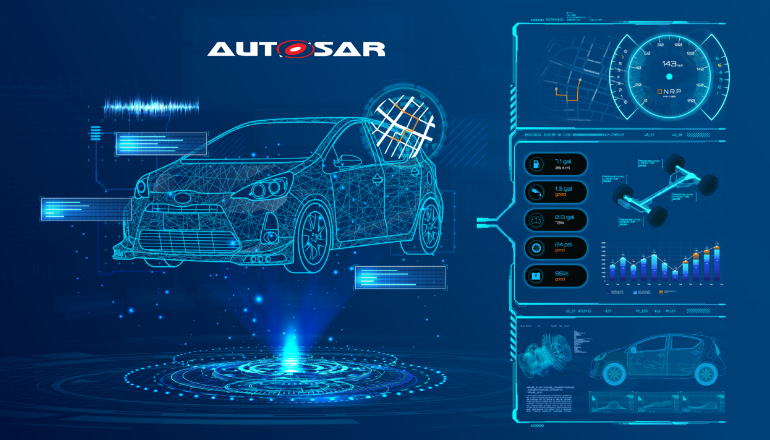Distributed Automotive SOA Service for Automotive Infrastructure
September 15, 2020
Dionis Teshler
CTO & Co-Founder

We are proud to announce our third Automotive SOA patent for integrating SOA capabilities into ECUs providing both flexibility and scalability for software and services to customize the vehicle. See our full list of patents here.
Cars are quickly transforming into a cross between a personalized device and a personalized environment. Soon, they will deliver a seamless driving experience — or a welcome and relaxing escape— while providing new revenue streams for OEMs and for the developers of innumerable applications for driving features, safety features, content, wellness, entertainment and more.
The core of our vehicles will no longer be the engine or its related technology, but the sensors and conveniences that will maximize the travel experience. Brand and vehicle differentiation will shift from the hardware to the user interface and experiential elements that are powered by electronics and software.
Software Complexity Evolution Explosion
As the importance of electronics and software has grown, so has its complexity. Take the exploding number of software lines of code (SLOC) contained in modern cars as an example. In 2010, some vehicles had about ten million SLOC; by 2016, this expanded by a factor of 15, to roughly 150 million lines. All of this complexity comes at a high cost: software issues in 2018 alone required the recall of millions of vehicles and cost the car industry over $17 billion. The design of current ECUs have reached their scalability limits to quickly fix/update software to reduce the cost impact due to recalls.

In the coming years, the difficulties of updating and integrating computer code in vehicles will become insurmountable: autonomous or partial autonomous vehicles will require an additional 200 million lines of code to handle vehicle-to-vehicle communication, vehicle-to-infrastructure communications and customizable or usability-related features.
Software Development and Lifecycle Cost
As the automotive industry is transitioning from hardware to software defined vehicles, the relevance of software for core technology trends are increasing rapidly. While software today represents 10% of the overall vehicle content, by 2030 software will comprise 30% of the vehicle.
With cars positioned to offer increasing levels of autonomy, automotive players see the quality and security of vehicle software and electronics as key requirements to guarantee safety. And this is requiring the industry to rethink today’s approaches to vehicle software and electrical and electronic (E/E) architecture.
To keep up with the customer demands, not only will the initial software development costs continue to rise, but the life cycle management costs will also rise. The maintenance costs alone are over 67% of total lifecycle costs. Every little software change can lead to months of testing/validation which increases cost. To stay competitive, software will be required to update more frequently to meet customer wants and expectations. This will drive up the cost of the software support contracts or service level agreements (SLA)
 Software applications - life cycle cost : Source: www.econnectivity.se
Software applications - life cycle cost : Source: www.econnectivity.se
Automotive SOA (Service-Oriented Architecture) is the remedy
Scaling up is a major challenge for vehicle electronics and network design. Automotive SOA allows common system functions to be formed into discrete, reusable services or standalone code compartments.
Any ECU, Domain Controller or Gateway becomes a platform or repository on which Tier 1 vendors and OEMs develop their services using standardized protocols that facilitate communications and enable easy data transfer, irrespective of the underlying hardware, topology and protocols that are used to create the services.
SOA as a Service will drastically reduce the software modular cost, eliminate the need to test the entire system, allow for rapid updates and quick feature introduction into the field. This streamlined behind the scenes updates/upgrades is similar to mobile phones (iphonize).
An additional advantage of a service-oriented architecture for automotive is that it allows for built-in security (such as seamless encryption) & application containment so that applications can be monitored and not be able to destabilize the entire system.
Distributed SOA Service as an Infrastructure
We have pioneered a patented approach for vehicle networks that uses the Automotive SOA methodology to enable any ECU, Domain Controller or Gateway to serve as a vehicle-wide computing platform. By integrating SOA capabilities into ECUs, you can maximize the functionality, security and safety of connected and autonomous vehicles while lowering the complexity of developing software and services to customize vehicles. The GuardKnox Automotive SOA Stack provides a real-time safe and secure environment for the operation of multiple services within a client-server framework.

It also includes a special partition that implements the functionality of the GuardKnox Communication LockdownTM mechanism that acts as a safeguard securing the entire vehicular computer network.
Automotive Security as a Service
A unique feature of the GuardKnox Automotive SOA Stack is its patented Communication Lockdown™ approach for providing holistic vehicle cybersecurity. Using the vehicle’s communications matrix and OEM’s specifications of the vehicle, GuardKnox builds a state machine that is used to inspect activity on three layers to ensure that if the external vehicle network is compromised by a message from the vehicle’s external connectivity, the internal vehicle network remains fully protected from the propagation of malicious activity.

Centralized Reusable Services
Service-Oriented Architecture uses a central repository of software services that can be accessed by a variety of subsystems. Because of this, it:
- Enables the improved delivery of services from local devices to multiple ECUs.
- Allows the flexibility of delivery of critical services with system-wide significance.
- Improves vehicle reliability & safety by having common functionality, implemented, tested and certified once.
By implementing these functions as SOA services rather than separate applications, GuardKnox enables Tier 1 suppliers to more efficiently and rapidly develop their products and services. In addition, OEMs need to perform a single testing and integration process that is considerably less expensive.
To learn more about Automotive Service-Oriented Architecture
please download our Whitepaper at the following link.





